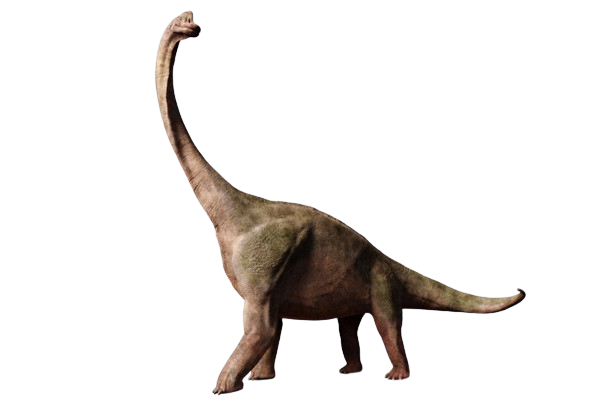Fossil Coast Drinks Co is pleased to introduce Steve Snowball as a guest blogger who will be sharing his knowledge, experience and expertise about fossil hunting at Durlston Bay and Peveril Point on the Jurassic Coast of Dorset. Steve is an accomplished author of "A Guide to Fossil Collecting in England & Wales" and co-author of a series of four other highly-acclaimed guides to fossil collecting on the Dorset coast.

Take heed! Durlston Bay, near Swanage, is a dangerous site and not a family location, as the cliffs are unstable and the tides need utmost consideration, as tidal conditions are unpredictable. It is far more suited to experienced fossil hunters but despite these real hazards, fossils are to be found.
The rocks at Durlston Bay represent those of the Purbeck Limestone Group: a transition between the Jurassic and the Cretaceous periods. During this time a large lagoon stretched along the coast; on the land were large numbers of dinosaurs and small mammals, and in the shallow waters were crocodiles, sharks, fish and turtles. Consequently, the fossils evident here are representative of these conditions and life forms.

The site is a SSSI (Site of Special Scientific Interest), so no digging or hammering into the bedrock is allowed.
However, beneath the crumbling cliffs, the rocks and boulders from innumerable falls can provide an excellent hunting ground. As can be expected, it’s a tough terrain underfoot, so boots are essential.
Drive out of Swanage along the A351 to get to the seafront. Local roads on the hill-top provide plenty of parking and easy access to the coast. Follow the public footpath down the grassy hill until you reach the Coast Guard tower at Peveril Point and from here it’s possible to climb over the rocks to the foreshore at Durlston Bay.

Fossils can be found along the foreshore, especially after storms. Rock falls, from the highly unstable cliffs, are common and provide fresh material on a regular basis.
Common sense when collecting at this location should be used and prior knowledge of tide times is essential. There are four tides a day here. The sea nearly always reaches the cliffs and the rocks can be very slippery. Care should also be taken of falling rocks.
The photo above shows the state of the cliffs, which constantly collapse or fall, thus providing fresh material within which to search. Fossils are generally quite small, so you’ll need to pay close attention to the surface of the rocks, to find potential fossils within.

Above is the simplified geology of Durlston Bay, with Peveril Point on the far right of the photo. Sections from the Upper Purbeck beds which have hit the beach can contain bones and teeth, as well as fish scales, wood, bivalves, etc. You’ll need a lump hammer and chisel to break the identified rock into manageable chunks, in order to transport back home.
The fossils found at Durlston Bay have included (see below).
Top Left: Goniopholis crocodile teeth from the Upper Purbeck Beds. | Top Right: Sauropod footprint. It took an effort to walk this large imprint back to the car! | Bottom Left: Turtle bone. | Bottom Middle: Unmistakable track of a theropod dinosaur, in a block too large to retrieve. | Bottom Right: Example Sauropod
At Peveril Point, the uppermost Durlston Formation of the Purbeck Group, belonging to the Lower Cretaceous, is seen. Access to the Durlston Formation is easy from Peveril Point but on the Durlston Bay side of this headland, access along the beach is often restricted.
The fossils found at Peveril Point have included (see below).
Top Left: Coelodus fish teeth | Top Middle: Fish scale, probably Callipurbeckia (Lepidotes) Sp. | Top Right: Small fish teeth | Bottom Left: Cluster of bivalves | Bottom Middle: Large fragment of turtle carapace | Bottom Right: Fragment of turtle shell.
Below are some of the items you should consider carrying with you. You can purchase a selection of geological tools and equipment online from UKGE.
1. A good hammer, preferably a geological hammer or a strong lump hammer. Do not use a woodworking hammer!
2. A chisel founded from cold steel is recommended as this metal is especially engineered for hard materials. Again, woodworking chisels are totally unsuitable and will not do the job required.
3. Safety glasses, which will protect your eyes from rock fragments. Essential and often over looked.
4. A strong bag for your finds.
About Guest Blogger - Steve Snowball

Steve Snowball spent a total of 35 years working in education; initially as a teacher, then as a headteacher and finally as an education advisor in West Sussex. He retired to live on the Jurassic Coast of West Dorset, where he was able to pursue his keen interest in collecting fossils and spending time walking his dogs, enjoying landscape photography, oil painting and gardening. Steve is the author of ‘A Guide to Fossil Collecting in England & Wales’ and co-author of a series of four other highly-acclaimed guides to fossil collecting on the Dorset coast, all published by Siri Scientific Press.























